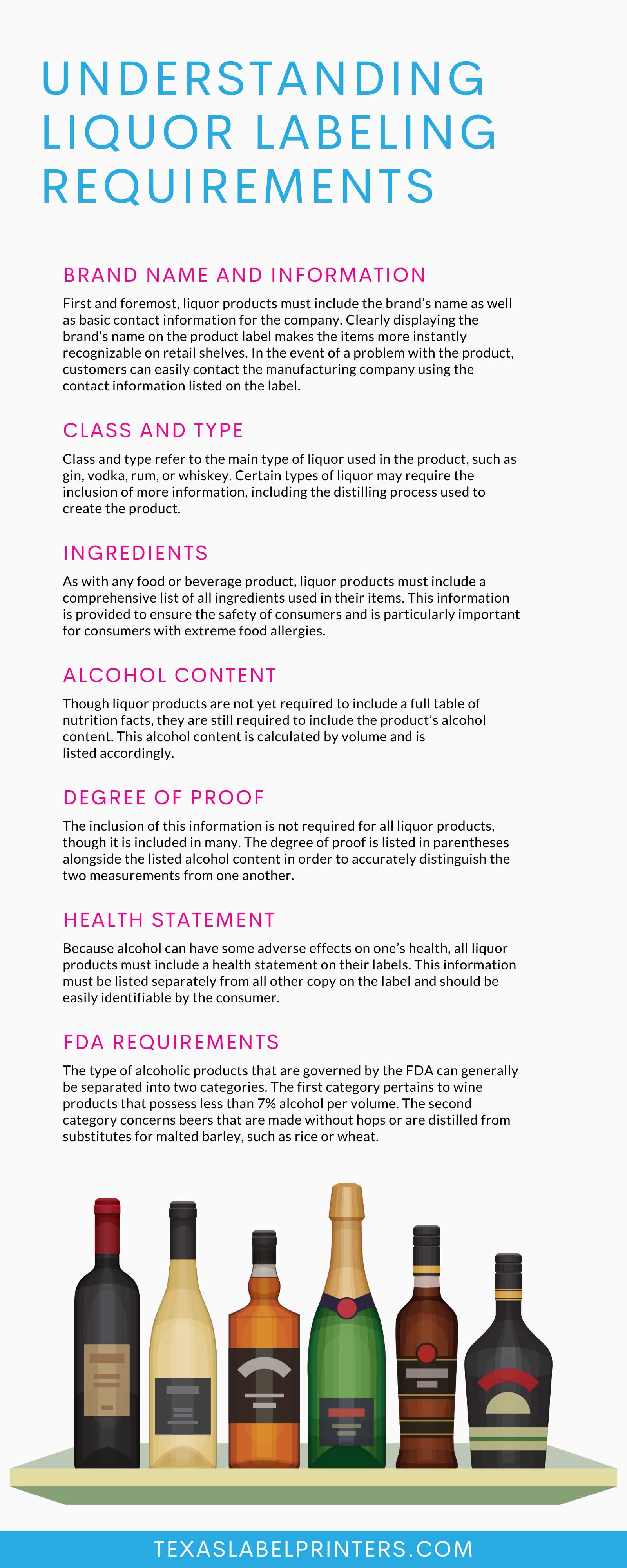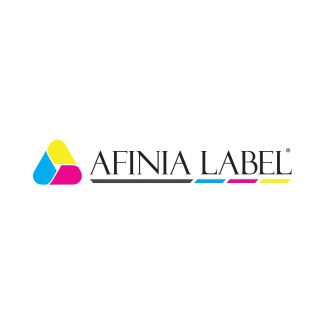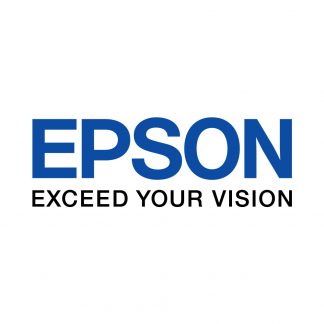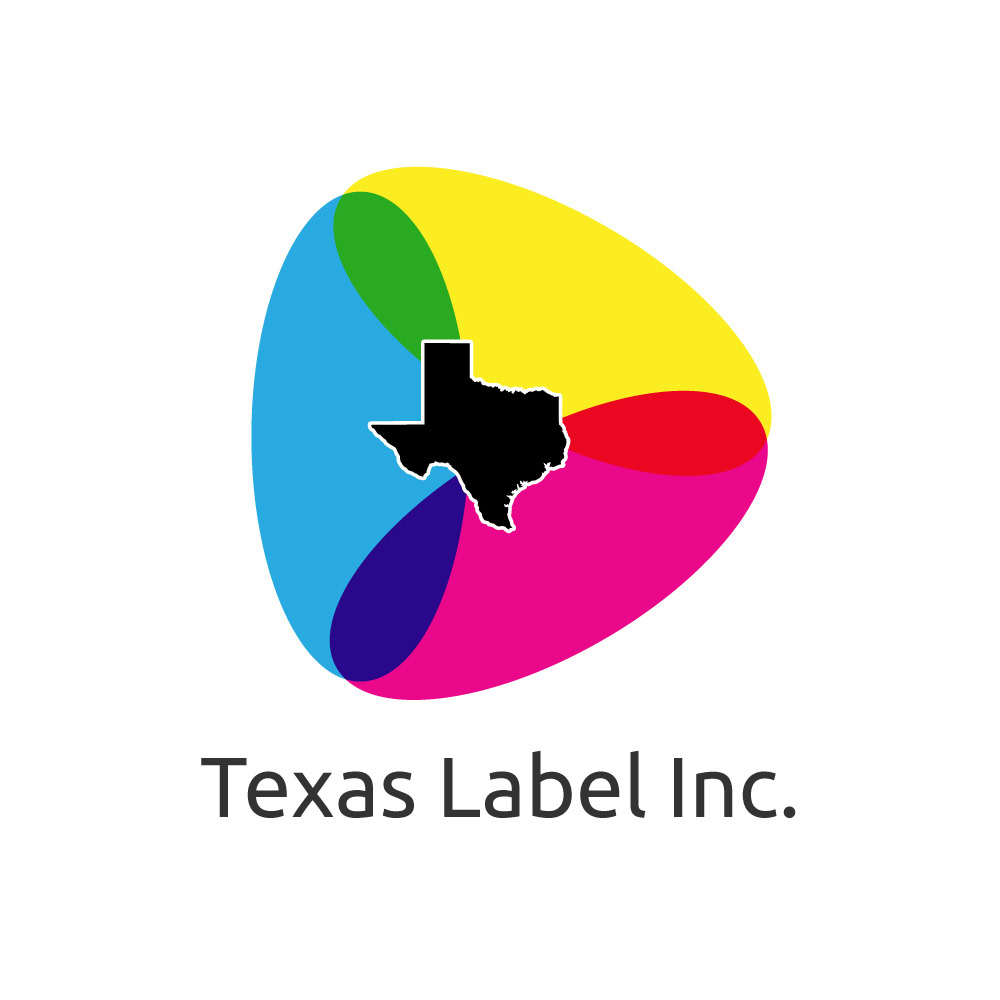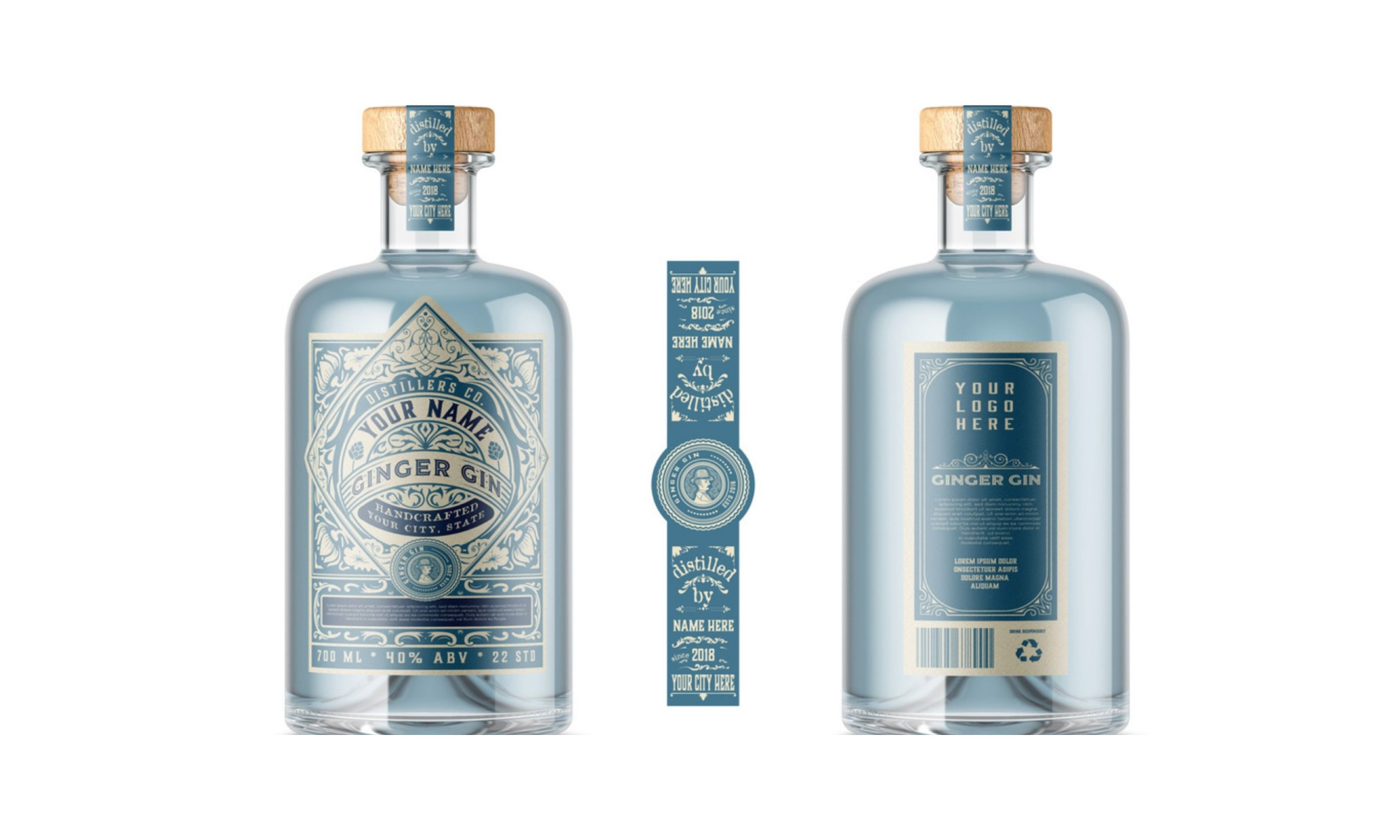
Product labels play a large role in the sale and overall success of an item. Labels are particularly important when it comes to food and beverages. Such labels must adhere to a specific set of requirements to ensure they provide consumers with the necessary dietary and health information. Alcoholic beverages must adhere to an even more specific set of requirements in their labels, as these products may present additional health concerns for some consumers. Understanding liquor labeling requirements is, therefore, of the utmost importance for manufacturers of alcoholic beverages. This comprehensive guide breaks down the specific information that must be included on the labels for alcoholic beverages. Hopefully, this article helps in your understanding of liquor labeling requirements and makes these regulations even easier to follow and more straightforward.
Brand Name and Information
First and foremost, liquor products must include the brand’s name as well as basic contact information for the company. The inclusion of the brand name is important for several reasons. For instance, many customers choose their products based on brand loyalty. Customers are more likely to purchase products from a company they have patronized in the past rather than venturing outside their comfort zone and experimenting with an entirely new brand. Clearly displaying the brand’s name on the product label makes the items more instantly recognizable on retail shelves. It also assures customers that they will receive the same standards of quality and care in this product as they have with other products from the same company.
The inclusion of the company’s contact information serves a more practical purpose than it does an advertorial one. In the event of a problem with the product, customers can easily contact the manufacturing company using the contact information listed on the label. This contact information should include the mailing address for the company and a phone number that consumers can use if they require customer service. A web address can also be included if applicable. Including multiple points of contact makes it easier for consumers to interact with your brand, thereby increasing the likelihood that they will form a loyal connection.
Class and Type
The front of a liquor label must also include the class and type of liquor in question. Class and type refer to the main type of liquor used in the product, such as gin, vodka, rum, or whiskey. Certain types of liquor may require the inclusion of more information, including the distilling process used to create the product. Vodka products, for instance, often need only include the product type, whereas whiskey or rum may need to include additional information regarding the distilling process.
Ingredients
As with any food or beverage product, liquor products must include a comprehensive list of all ingredients used in their items. This information is provided to ensure the safety of consumers and is particularly important for consumers with extreme food allergies. Consumers with a gluten intolerance or celiac disease, for instance, must steer clear of any items that include gluten. As some liquor products are derived from wheat and barley, it’s absolutely crucial to include this information in the product label. Including a complete list of ingredients helps consumers avoid potential allergic reactions and also reduces the company’s liability in the event such a reaction does occur.
Alcohol Content
Though liquor products are not yet required to include a full table of nutrition facts, they are still required to include the product’s alcohol content. This alcohol content is calculated by volume and is listed accordingly. This information must be included in all products where the alcohol content exceeds 1.1%. Alcohol content must be clearly labeled on the front of the product packaging and should be clearly visible without turning the product. Depending on the alcohol content, some products may also be labeled as “light.”
Degree of Proof
In addition to the listed alcohol content, some liquor labels may also include a degree of proof. The inclusion of this information is not required for all liquor products, though it is included in many. If included, the degree of proof must be listed in direct conjunction with the listed alcohol content. The degree of proof is listed in parentheses alongside the listed alcohol content in order to accurately distinguish the two measurements from one another. A vodka label, for instance, would likely have the following listing: 40% ALC/VOL (80 PROOF).
Health Statement
Because alcohol can have some adverse effects on one’s health, all liquor products must include a health statement on their labels. This information must be listed separately from all other copy on the label and should be easily identifiable by the consumer. In this health statement, it should be clearly stated that alcoholic beverages should not be consumed by women who are pregnant or individuals with extreme health conditions. These health recommendations are prescribed by the surgeon general and should be listed under the phrase “GOVERNMENT WARNING.”
This information may be labeled on the front, back, or side of the product but should be straightforward and easily legible. Because liquor bottles are quite small, the information on their label tends to be rather compressed as well. In order to ensure that the information is still clearly legible, it’s important to print the labels with a high-quality printer, such as an Epson or Afinia label printer.
FDA Requirements
It’s important to note that some alcoholic products may require the inclusion of additional information. Not all alcoholic products are governed by the Food and Drug Administration (FDA) and, therefore, may not require the inclusion of such specific information. The type of alcoholic products that are governed by the FDA can generally be separated into two categories. The first category pertains to wine products that possess less than 7% alcohol per volume. The second category concerns beers that are made without hops or are distilled from substitutes for malted barley, such as rice or wheat. These specific types of alcoholic beverages must adhere to the additional labeling requirements of the FDA, such as the inclusion of nutrition facts and the aesthetic design of how information is presented on the label.
